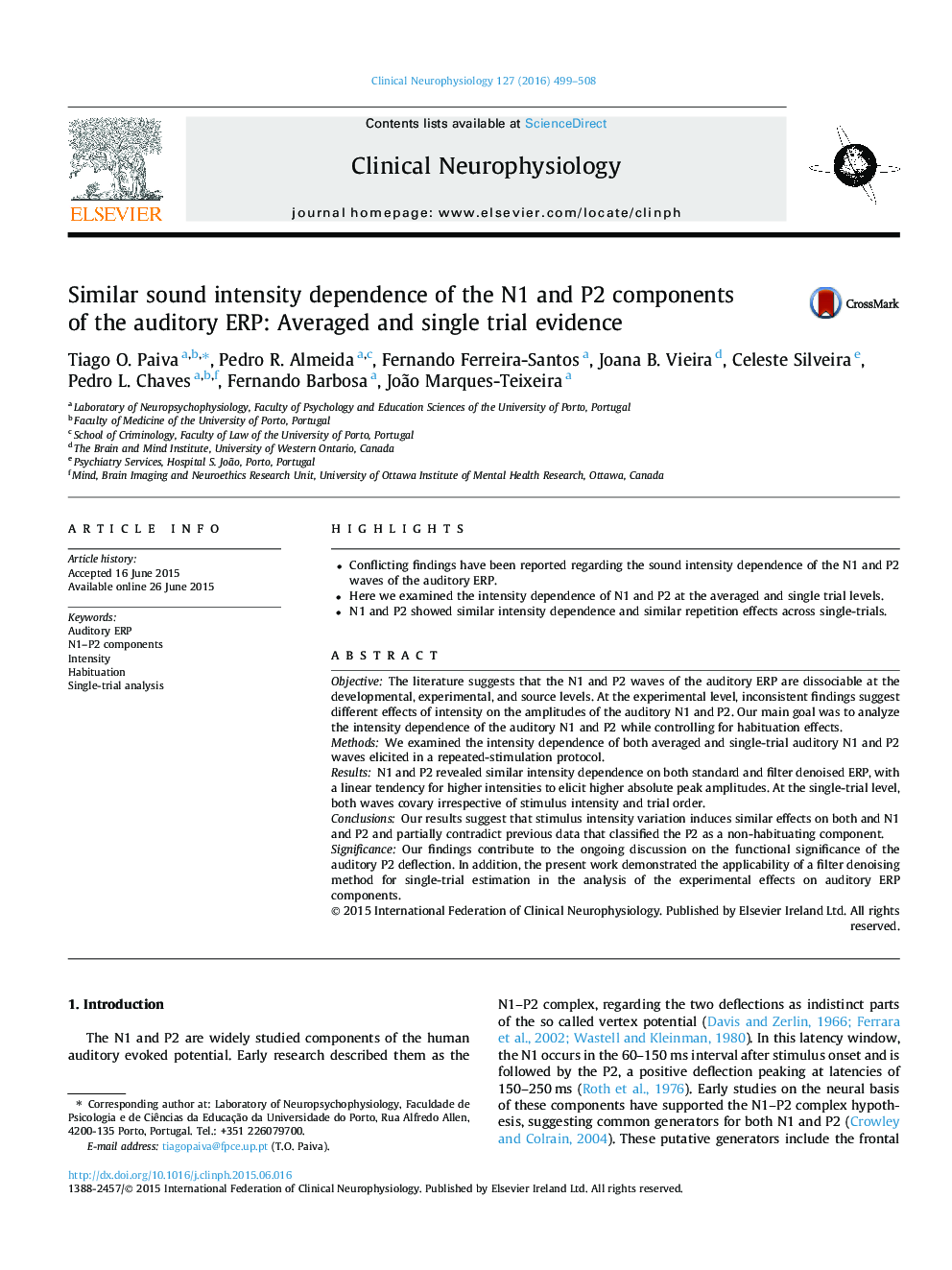| Article ID | Journal | Published Year | Pages | File Type |
|---|---|---|---|---|
| 6007913 | Clinical Neurophysiology | 2016 | 10 Pages |
â¢Conflicting findings have been reported regarding the sound intensity dependence of the N1 and P2 waves of the auditory ERP.â¢Here we examined the intensity dependence of N1 and P2 at the averaged and single trial levels.â¢N1 and P2 showed similar intensity dependence and similar repetition effects across single-trials.
ObjectiveThe literature suggests that the N1 and P2 waves of the auditory ERP are dissociable at the developmental, experimental, and source levels. At the experimental level, inconsistent findings suggest different effects of intensity on the amplitudes of the auditory N1 and P2. Our main goal was to analyze the intensity dependence of the auditory N1 and P2 while controlling for habituation effects.MethodsWe examined the intensity dependence of both averaged and single-trial auditory N1 and P2 waves elicited in a repeated-stimulation protocol.ResultsN1 and P2 revealed similar intensity dependence on both standard and filter denoised ERP, with a linear tendency for higher intensities to elicit higher absolute peak amplitudes. At the single-trial level, both waves covary irrespective of stimulus intensity and trial order.ConclusionsOur results suggest that stimulus intensity variation induces similar effects on both and N1 and P2 and partially contradict previous data that classified the P2 as a non-habituating component.SignificanceOur findings contribute to the ongoing discussion on the functional significance of the auditory P2 deflection. In addition, the present work demonstrated the applicability of a filter denoising method for single-trial estimation in the analysis of the experimental effects on auditory ERP components.
